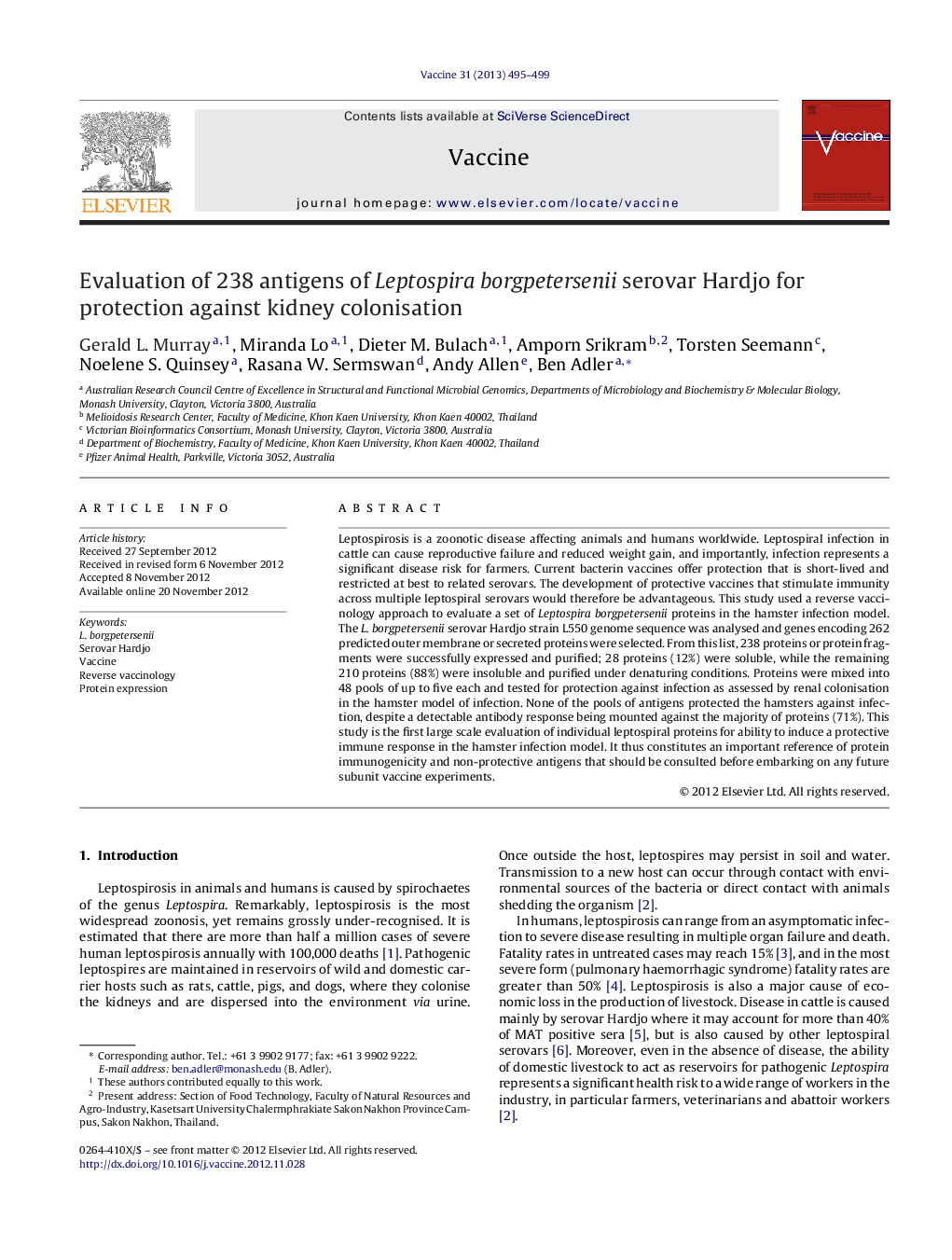| Article ID | Journal | Published Year | Pages | File Type |
|---|---|---|---|---|
| 2403379 | Vaccine | 2013 | 5 Pages |
Leptospirosis is a zoonotic disease affecting animals and humans worldwide. Leptospiral infection in cattle can cause reproductive failure and reduced weight gain, and importantly, infection represents a significant disease risk for farmers. Current bacterin vaccines offer protection that is short-lived and restricted at best to related serovars. The development of protective vaccines that stimulate immunity across multiple leptospiral serovars would therefore be advantageous. This study used a reverse vaccinology approach to evaluate a set of Leptospira borgpetersenii proteins in the hamster infection model. The L. borgpetersenii serovar Hardjo strain L550 genome sequence was analysed and genes encoding 262 predicted outer membrane or secreted proteins were selected. From this list, 238 proteins or protein fragments were successfully expressed and purified; 28 proteins (12%) were soluble, while the remaining 210 proteins (88%) were insoluble and purified under denaturing conditions. Proteins were mixed into 48 pools of up to five each and tested for protection against infection as assessed by renal colonisation in the hamster model of infection. None of the pools of antigens protected the hamsters against infection, despite a detectable antibody response being mounted against the majority of proteins (71%). This study is the first large scale evaluation of individual leptospiral proteins for ability to induce a protective immune response in the hamster infection model. It thus constitutes an important reference of protein immunogenicity and non-protective antigens that should be consulted before embarking on any future subunit vaccine experiments.
